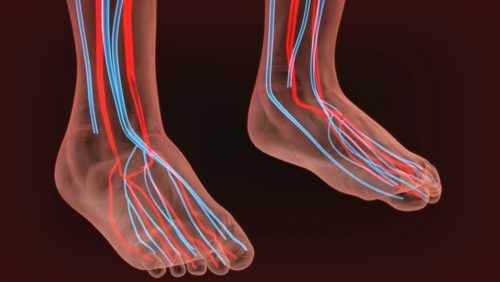Neuropathy is a frustrating, debilitating, painful, and, most discouragingly, a confusing disease. If you or someone you know has neuropathy, chances are they have really struggled with finding accurate knowledge on the subject, and with all the information out there it can be overwhelming deciphering what’s true from what isn’t.
Though neuropathy is a fairly common disease, it is not widely known about. One of the first struggles with neuropathy is getting it properly diagnosed. Also, there are so many thoughts and opinions on neuropathy that you may hear conflicting or even false information. As doctors who specialize in neuropathy and treatments for it, we have compiled a helpful list of fact versus fiction to finally help you better understand your neuropathy.
Neuropathy Facts:
- There are a wide variety of symptoms, and not everyone experiences them all.
- The most common symptoms include: muscle weakness, twitching, tingling, loss of balance, numbness, burning, prickling sensations, and/or nerve pain in your legs or feet, and symptoms can vary from one foot to the other.
- Neuropathy is progressive.
- This is one of the most important facts to know! Neuropathy will get worse over time, so if you have symptoms do not delay treatment. Some patients wait until their symptoms are more severe before seeking treatment, which can reduce the chance to reverse or alleviate them.
- Neuropathy is a fancy word for nerve damage.
- Though it may sound simple, this is exactly what neuropathy is. It’s the disease or dysfunction of one or more peripheral nerves.
- There are treatments that can reverse neuropathy symptoms.
- Though many don’t realize this, there are treatment options that have had huge success in reversing, or at the very least improving some people’s neuropathy. These treatments include:
- MLS Laser Therapy– helps to reduce pain and inflammation and improve nerve function.
- Electrical Nerve Stimulation (ESTIM)– helps to decrease chronic nerve pain, often done in conjunction with nerve blocks.
- Nutritional counseling– when done in tangent with MLS and/or ESTIM can help reverse symptoms.
- Nerve decompressing surgery– opens up the tight nerve tunnel to allow the nerve to function properly, is a viable option for the majority of patients, and offers the very real hope of reversing neuropathy’s effects, allowing you to move with little to no pain or instability.
- Though many don’t realize this, there are treatment options that have had huge success in reversing, or at the very least improving some people’s neuropathy. These treatments include:
Neuropathy Fiction:
- Neuropathy only affects diabetics.
- Although neuropathy is common in people with diabetes, it is a misconception that it only affects those with it. It can have many other causes including injury, infections, alcoholism, and even certain cancers. There are also unknown (idiopathic) causes
- If the pain subsides or goes away, you are getting better.
- False! This is a very dangerous fallacy. When symptoms seem to be getting better they are often actually getting worse, because the later stages of neuropathy can cause numbness making you not feel the pain that is actually there.
- I will always have to be on medication.
- Though medications are commonly the first step in treating neuropathy, they typically come with unwanted side effects or are ineffective. What people don’t understand is that by seeking other treatments options like the ones listed above, you can reduce or even get off your medication.
- Any doctor can help treat neuropathy.
- Although most doctors know what neuropathy is, they are not all equal in understanding or treating it. Our doctors at Anderson Podiatry Center are members of the Association of Extremity Nerve Surgeons. These national and international physician and PHD members receive specialty training and have a minimum two years’ experience in diagnosing and treating neuropathy. AENS members are committed to disseminating current effective treatment knowledge, and to ongoing research that supports the treatment of extremity nerve disease.
These are just some of the basic misunderstandings on neuropathy. If you suffer from neuropathy come see us today so you can finally get the help you deserve!












